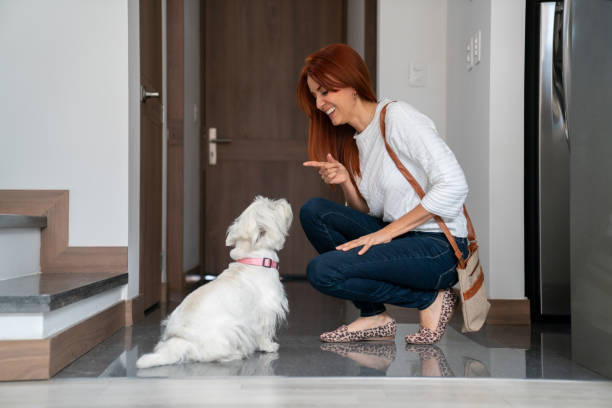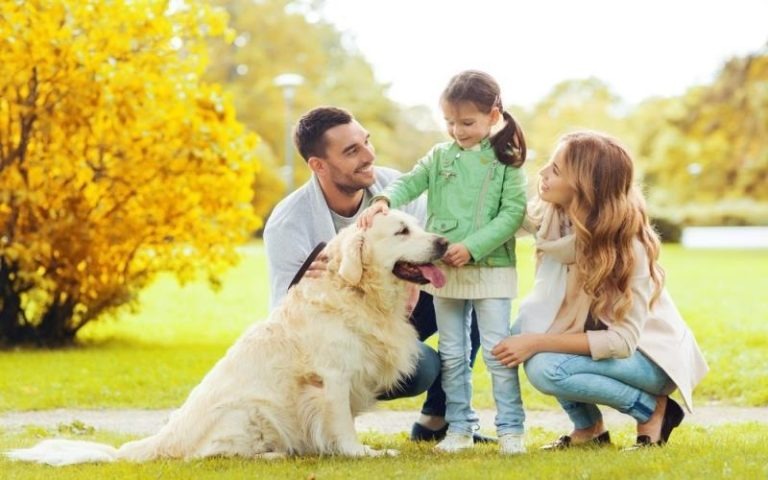
Happy at Home: Training Your Pet to Stay Alone Without Feeling Abandoned
Learn how to help your pet feel secure and calm when alone through proven techniques, expert advice, and practical steps—building confidence, reducing anxiety, and fostering independence with love.
🐶 Pet Star
31 min read · 5, Jul 2025

Understanding Separation Anxiety in Pets
Separation anxiety is a common behavioral issue in pets, especially dogs and cats. When left alone, many pets exhibit signs of distress such as barking, whining, destructive behavior, or inappropriate elimination. These behaviors not only frustrate owners but can also severely impact a pet’s well-being.
What Causes Separation Anxiety?
Separation anxiety usually stems from a pet’s deep attachment to its owner and fear of abandonment. Pets that have experienced sudden changes in routine, a move, or traumatic events may be more susceptible. Additionally, breeds with strong pack instincts or those raised in highly social environments can be more prone to anxiety.
Recognizing Symptoms
Common signs include:
- Vocalizing excessively when left alone
- Pacing or restlessness
- Destructive chewing or scratching
- Attempts to escape confinement areas
- Loss of appetite or depression
Understanding these signs is the first step in effectively addressing separation anxiety and teaching your pet to stay alone comfortably.
The Psychology of Pets and Alone Time
Attachment Theory in Pets
Like humans, pets form emotional bonds that affect their mental state. Dogs, for example, are pack animals that rely heavily on social structures for security. When their “pack leader” or owner leaves, pets may feel vulnerable and uncertain.
How Pets Perceive Time and Absence
Pets don’t understand time like humans do. Minutes may feel like hours to them. Their perception of absence is tied to sensory cues such as sounds, scents, and routines. Reducing anxiety involves manipulating these cues to create a sense of ongoing presence.
Preparing Your Pet for Alone Time
Gradual Desensitization: The Cornerstone Technique
Gradual desensitization involves slowly increasing the time your pet spends alone, allowing them to build confidence without triggering anxiety.
- Start by leaving your pet alone for a few seconds.
- Gradually increase this duration over days and weeks.
- Reward calm behavior upon your return.
Creating a Safe and Comfortable Environment
Provide a designated space for your pet where they feel secure. This might be a crate, a cozy corner, or a room with familiar toys and bedding.
- Use calming aids like pheromone diffusers or white noise machines.
- Ensure water, food, and toys are available.
- Avoid making a big fuss when leaving or returning to reduce emotional highs and lows.
Training Techniques to Reduce Anxiety
Counterconditioning
Counterconditioning replaces negative feelings about being alone with positive ones. For example, giving your pet a special treat or a puzzle toy only when you leave encourages them to associate your absence with something enjoyable.
Teaching Independence
Encourage your pet to be comfortable alone even when you are home. Set aside “alone time” periods where you are present but not interacting with them, so they learn self-soothing behaviors.
The Role of Exercise and Mental Stimulation
Physical Exercise
A well-exercised pet is more likely to rest calmly during alone time. Regular walks, playtime, and training sessions help expend excess energy that could otherwise fuel anxiety.
Mental Enrichment
Interactive toys, treat puzzles, and scent games provide mental stimulation that can distract your pet and keep their mind engaged while you are away.
Professional Help and When to Seek It
When Is Anxiety Severe?
If your pet exhibits destructive behaviors, self-harm, or extreme distress despite your efforts, professional help may be necessary.
Veterinarians and Behaviorists
Veterinarians can rule out medical causes, while certified animal behaviorists or trainers can create personalized plans, sometimes incorporating medication for severe cases.
Case Studies and Success Stories
Bella’s Transformation
Bella, a rescue dog with severe separation anxiety, improved dramatically through gradual desensitization, counterconditioning, and structured alone-time training. Her owner reports she now rests peacefully when left alone for several hours.
Max’s Mental Stimulation Strategy
Max’s owner combined exercise with puzzle toys to redirect his energy, leading to reduced vocalizing and destructive behavior when alone.
Technology and Tools to Support Alone Training
Pet Cameras and Two-Way Audio
Devices like pet cameras allow owners to monitor and interact with pets remotely, providing reassurance for both parties.
Automatic Treat Dispensers
Timed treat dispensers reinforce positive behavior during alone time, creating rewarding experiences linked to owner absence.
Addressing Common Myths About Pets and Alone Time
Myth 1: Pets Should Never Be Left Alone
While some pets may struggle initially, most can learn to cope and even enjoy alone time with proper training.
Myth 2: Ignoring the Problem Will Make It Go Away
Avoidance can worsen anxiety. Active training and behavior modification are essential.
Myth 3: Medication Is Always Needed
Medication is a tool, not a solution. Behavioral strategies should be the foundation of any treatment plan.
Tips for Maintaining Progress and Preventing Regression
Consistency is Key
Consistency forms the backbone of successful alone-time training. Pets thrive on routine and predictability; sudden changes can trigger anxiety or setbacks. Maintaining a regular schedule for feeding, exercise, and alone time helps your pet anticipate what comes next, creating a sense of security.
For instance, if you typically leave for work at 8 a.m., try to stick to that schedule as closely as possible. Dogs, in particular, quickly learn daily rhythms and use them to manage their expectations. Irregular departures or returns can confuse them and heighten stress levels.
Gradual Exposure to New Environments
If you often travel or your pet experiences changes in routine, gradual exposure to new environments helps prevent regression. Before a longer trip, practice alone time in a different room or at a friend’s house to build adaptability.
Veterinarian Dr. Lisa Freeman emphasizes, “Pets that are exposed to varied but controlled alone-time scenarios tend to cope better with unexpected absences.” This flexibility is particularly important for pets with a history of separation anxiety.
Use of Calming Aids
Incorporating calming products such as pheromone diffusers (like Adaptil for dogs or Feliway for cats), anxiety wraps, or natural supplements can support your pet’s emotional state during alone time.
Research published in the Journal of Veterinary Behavior (2022) found that pheromone therapy combined with behavioral training reduced anxiety signs by 30% compared to training alone.
Ongoing Positive Reinforcement
Even after your pet has adapted to staying alone, continue rewarding calm behavior. This reinforces their new coping strategies and prevents old anxious habits from resurfacing.
Simple rewards such as treats, praise, or playtime upon your return strengthen the positive association with your absence.
Monitoring Behavioral Changes
Keep a journal or use a pet monitoring app to track your pet’s behavior during alone time. Note signs of distress such as pacing, vocalizing, or destructive actions.
Early detection of any regression allows for timely intervention. Adjust training strategies, increase exercise, or consult a professional as needed.
Expert Insights: What Trainers and Behaviorists Say
Dr. Sophia Kim, Certified Animal Behaviorist
Dr. Kim emphasizes the importance of addressing the emotional needs behind separation anxiety. “Training alone time is not just about preventing bad behavior—it’s about helping pets feel safe and loved, even when they are physically alone.”
She advocates combining desensitization with mental enrichment and maintaining a calm departure routine to avoid heightening anxiety.
James Turner, Professional Dog Trainer
James notes, “One of the biggest mistakes owners make is making a huge fuss when leaving or returning. This can inadvertently teach pets that departures are stressful events.”
He suggests a low-key approach—ignore your pet for a few minutes before leaving and after coming back until they are calm, then reward relaxed behavior.
Dr. Elena Garcia, Veterinarian
Dr. Garcia advises that pet owners always rule out medical issues that may exacerbate anxiety symptoms. “Pain or discomfort can increase a pet’s stress levels and complicate training. A full health check is a crucial step before beginning behavioral interventions.”
Building Independence Through Routine and Enrichment
Scheduled Alone Time During the Day
Even when at home, incorporate periods where your pet is encouraged to be alone in a different room. This teaches independence gradually and reduces clinginess.
Start with short intervals and gradually increase as your pet becomes comfortable.
Enrichment Activities
Provide a rotating selection of toys, chew items, and puzzle feeders. Changing up toys keeps your pet mentally stimulated and less focused on your absence.
Scent games, where you hide treats around the house for your pet to find, engage their natural foraging instincts and provide enjoyable distractions.
How to Handle Setbacks and Unexpected Challenges
Recognizing Triggers
Certain events such as thunderstorms, fireworks, or visitors can trigger regression. Preparing your pet with calming techniques and environmental adjustments (like blackout curtains or sound machines) can help.
Don’t Punish Anxiety Behaviors
Punishment or scolding increases stress and can worsen separation anxiety. Instead, remain patient and use positive reinforcement to encourage desired behaviors.
Revisit Training Basics
If setbacks occur, return to shorter absences and rebuild confidence gradually. Reintroduce counterconditioning and desensitization techniques as needed.
Conclusion
Training your pet to stay alone without feeling abandoned is a compassionate and practical approach that benefits both pets and owners. Pets are social creatures who rely heavily on their human companions for security and comfort, making alone time a potential source of stress and anxiety. However, with patience, consistency, and the right techniques, pets can learn to embrace independence and feel safe even when their favorite person is away.
Key strategies such as gradual desensitization, counterconditioning, and creating a comforting environment empower pets to cope with absence. Incorporating physical exercise and mental enrichment reduces excess energy and boredom, which are often triggers for anxious behavior. Technology, professional guidance, and owner self-awareness further enhance success, ensuring pets receive a holistic approach to their emotional and physical needs.
Understanding the psychology behind separation anxiety helps owners respond empathetically rather than reactively. Every pet is unique, so tailoring training to individual temperament and history is essential. Moreover, consistent routines and positive reinforcement foster trust and resilience.
Ultimately, training your pet to stay alone confidently strengthens your bond by showing your pet that you respect their emotional well-being and independence. This approach reduces destructive behaviors, enhances mental health, and makes departures and reunions more peaceful for everyone involved.
Investing time and effort into alone-time training leads to happier pets and a more harmonious household—making your pet’s independence one of the greatest gifts you can give them.
Frequently Asked Questions (Q&A)
Q1: What is separation anxiety in pets?
A1: Separation anxiety is a behavioral condition where pets experience distress when left alone, often showing symptoms like vocalizing, destructive behavior, or restlessness.
Q2: How can gradual desensitization help my pet?
A2: Gradual desensitization slowly increases the time your pet spends alone, helping them build confidence without becoming overwhelmed.
Q3: Are all pets prone to separation anxiety?
A3: No, but pets with strong social bonds, certain breeds, or traumatic histories are more susceptible.
Q4: Can exercise reduce my pet’s anxiety when alone?
A4: Yes, physical activity helps expend excess energy and promotes calm behavior during alone time.
Q5: What role does mental stimulation play in alone training?
A5: Mental enrichment like puzzle toys keeps pets engaged and distracted, reducing anxiety and boredom.
Q6: Should I make a big deal when leaving or coming home?
A6: No, keeping departures and arrivals low-key prevents reinforcing anxiety around those events.
Q7: When should I seek professional help for my pet?
A7: If your pet shows severe distress or destructive behaviors despite training, a veterinarian or behaviorist should be consulted.
Q8: Are calming products effective for separation anxiety?
A8: They can support behavioral training but should not replace it; pheromone diffusers and anxiety wraps may reduce stress.
Q9: Can technology assist in training my pet to stay alone?
A9: Yes, pet cameras and treat dispensers allow remote interaction and positive reinforcement.
Q10: How important is owner behavior in this training?
A10: Very important; a calm, confident owner helps pets feel secure and reduces anxiety.
Similar Articles
Find more relatable content in similar Articles

How Pets Strengthen Family Bonds...
Pets are more than just compan.. Read More

The Growing Trend of Therapy and Emotional Support Ani..
Exploring the remarkable rise .. Read More

How Climate Change Affects Wild and Domestic Animals...
Climate change is dramatically.. Read More

Pets and Mental Health: The Science Behind Emotional H..
Discover the profound impact o.. Read More
Explore Other Categories
© 2024 Copyrights by rPets. All Rights Reserved.